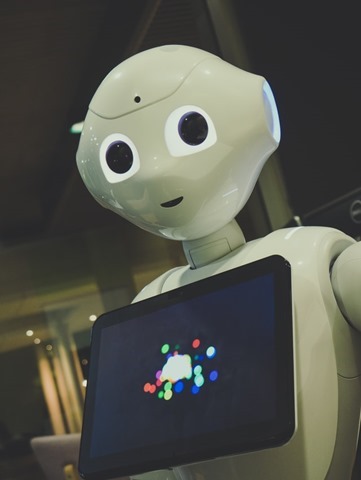
61 million adults in the U.S. live with a disability with almost 14% experiencing mobility issues, including serious difficulty walking or climbing stairs, the CDC reveals. Fortunately, technological innovations are helping people with disabilities experience greater independence, comfort, and ease in all aspects of life. Thanks to XR apps, assistive robots, and digital voice assistants, people with disabilities can be empowered to participate to their fullest potential.
Extended reality (XR) apps
XR (which includes augmented reality and virtual reality) is an immersive technology with the potential to empower people with disabilities to interact and communicate effectively with others, albeit remotely. PresentinAR, for example, is an XR-based app that lets users buy and sell goods (like home appliances and furniture) remotely. Virtual 3D models of the goods in their real environment are shared via video conferencing — meaning people with disabilities or limited mobility can therefore purchase furniture easily without needing to leave their homes.
Assistive robots
Impaired mobility is a particularly common issue with cerebral palsy, the most common childhood motor disorder, CPFN explains. Spastic cerebral palsy (the most common type of cerebral palsy) involves stiff and tight muscles that make it difficult to move — particularly for the muscles in the lower body. In this case, a wearable exoskeleton suit may help people with cerebral palsy and other disabilities safely and effortlessly take care of everyday tasks (including picking up objects). Exoskeleton suits are designed to fit both the upper and lower body. Alternatively, Scewo Bro, another type of assistive robot, is a clever power wheelchair with a host of useful features to help people with disabilities improve their mobility. In particular, Scewo Bro is stable and self-balancing, which means the user is free to traverse steep inclines and even climb stairs independently. It also comes with three useful driving modes to ensure all types of terrain (such as, snow and gravel) can be navigated safely.
Digital voice assistants
AI-based voice assistants, including Apple Siri, Amazon Alexa, and Google Assistant, are becoming increasingly popular with eight billion expected to be in use around the world by 2023. However, people with disabilities, including voice disorders or speaking difficulties, often are unable to use voice assistants. Fortunately, Google’s Project Understood has now launched to make voice technology more inclusive. Specifically, it aims to help Google voice technology better understand individuals who have Down’s syndrome — currently, Google Assistant gets one in every three words wrong for people with this disability. The project aims to give the system (that’s already very dynamic) more data collected from real-life project participants to help it understand people with Down’s syndrome — which will mean it also ultimately ends up understanding people with other disabilities or different types of atypical speech.
Technological innovations are helping to improve quality of life for people with disabilities. XR-apps, assistive robots, and digital voice assistants, in particular, are just some of the latest releases helping people with disabilities live their lives to the fullest.